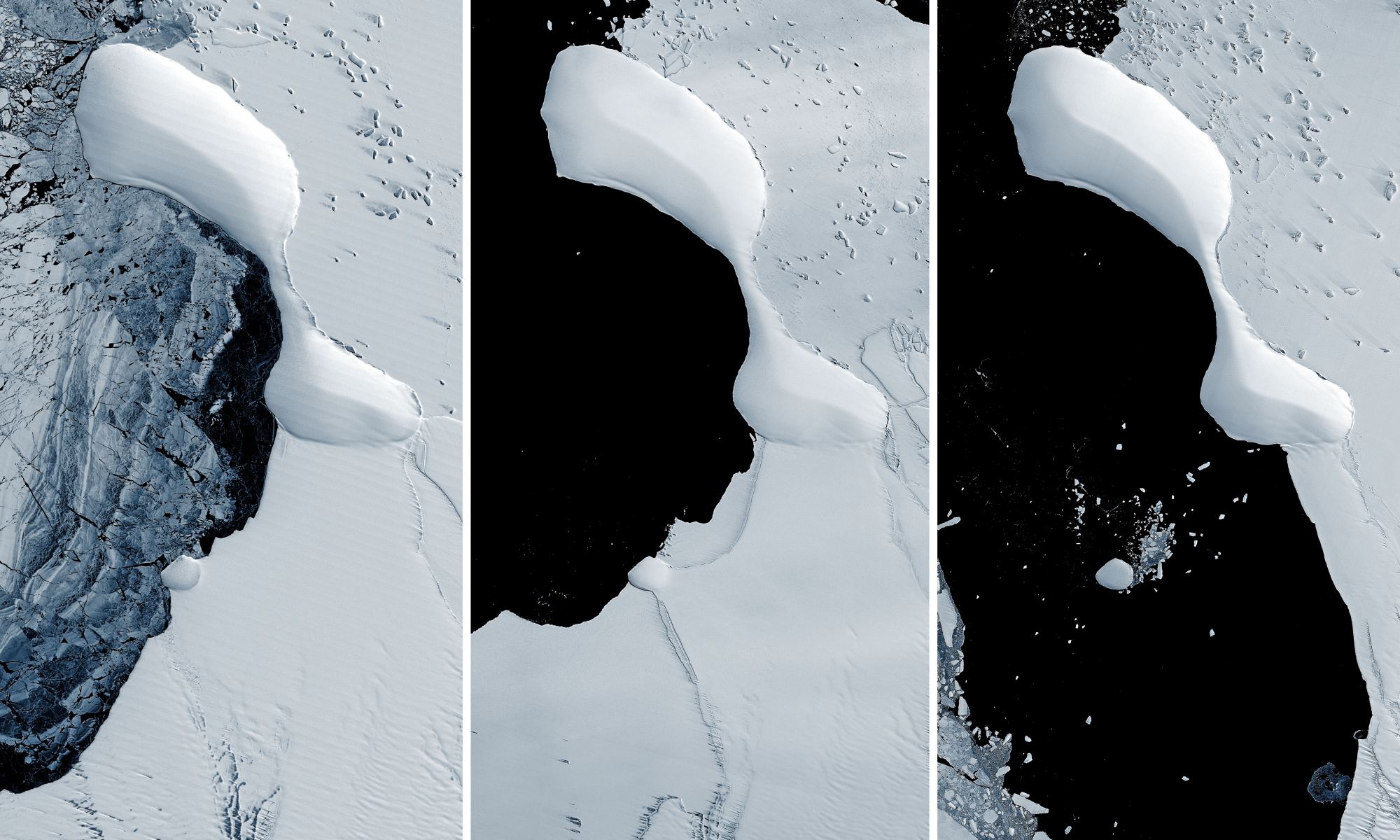Collapsing ice shelves on the eastern coast of Antarctica has revealed something never seen before: a landform that might be an island. But this is not the first newly revealed island off the Antarctic coast. A series of islands have appeared as the ice shelves along the continent’s coastline has disintegrated over the past few years.
The island is visible in the three images, which were taken by Landsat satellites between 1989 and 2022. The landform maintains its shape, even through the ice around it has melted, shifted, and disappeared. With the collapsing ice, scientists think large icebergs likely smashed into the island, but the island maintained its shape.

However, scientists are unsure if there is any solid earth below the mound of snow and ice.
“It is undoubtedly similar to other ice islands, such as Bowman Island (also visible in the image above),” said John Gibson, a scientist with the Australian Antarctic Division, in a post on NASA’s Earth Observatory. Gibson thinks the feature is likely an ice island: a large, heavy cap of ice sitting solidly on an underwater peak.
Gibson called the ice island “self-perpetuating,” meaning that snow and ice accumulating on the island’s surface balances out the amount of melting that occurs underwater. If that balance becomes disrupted by a decrease in snowfall, then the ice island could thin and float away. “The unnamed island is a more-or-less permanent feature of the landscape,” Gibson said, “but may someday detach from the underlying rock and become an iceberg.”
NASA says that elevation data in December 2021 from the Advanced Topographic Laser Altimeter System (ATLAS) on NASA’s Ice, Cloud, and land Elevation Satellite 2 (ICESat-2) shows at least part of the island stands 30 to 35 meters (100 to 115 feet) above the surface of the sea.
NASA says that most of the Glenzer and Conger ice shelves are gone, having collapsed earlier this year. And with further collapse of Antarctic ice shelves due to the warming ocean, more of these islands might be popping up.
“The discovery of more of them is likely to continue in the years ahead due to shrinking glacial and sea ice,” said Christopher Shuman, a University of Maryland, Baltimore County, glaciologist based at NASA’s Goddard Space Flight Center. “Obviously these are ‘new to us’ features, but we also have more people and more tools to look at the margins of Antarctica now. Several examples do not make a trend, but they do imply that other once-hidden features are likely to be noticed in the years to come.”
Read more about this landform on NASA’s Earth Observatory.

